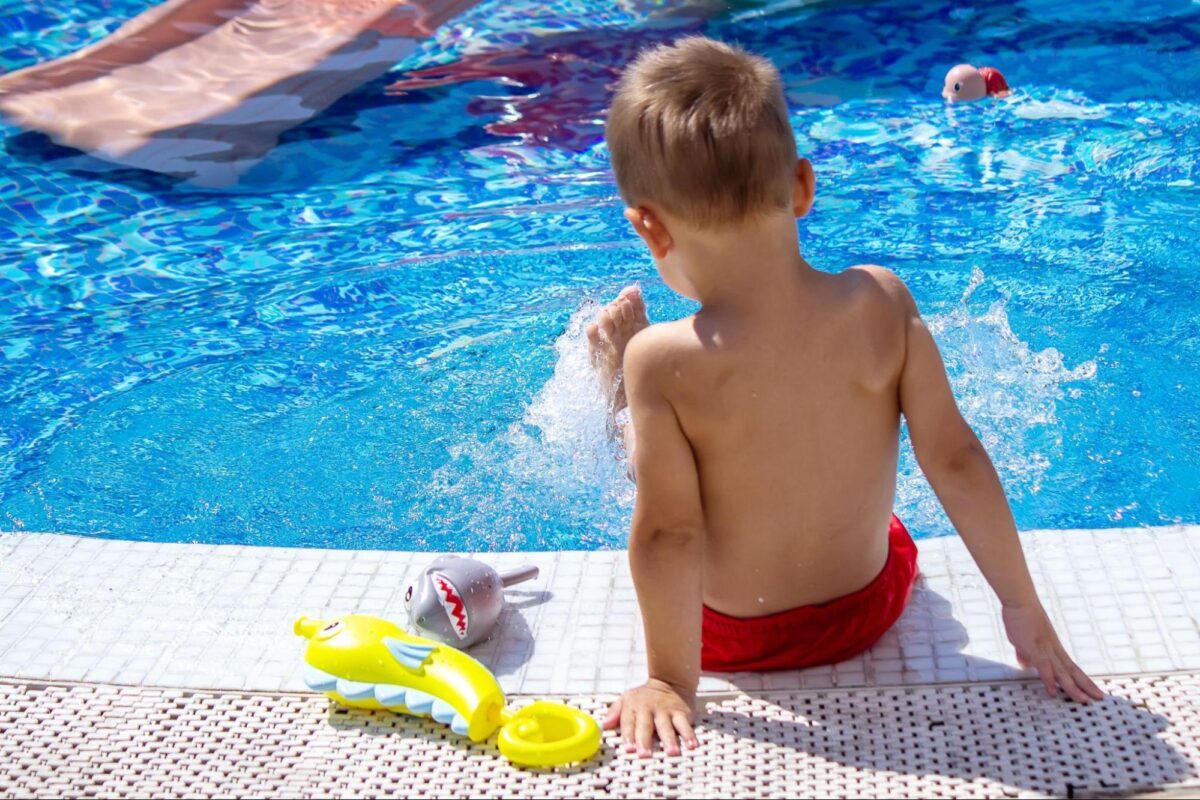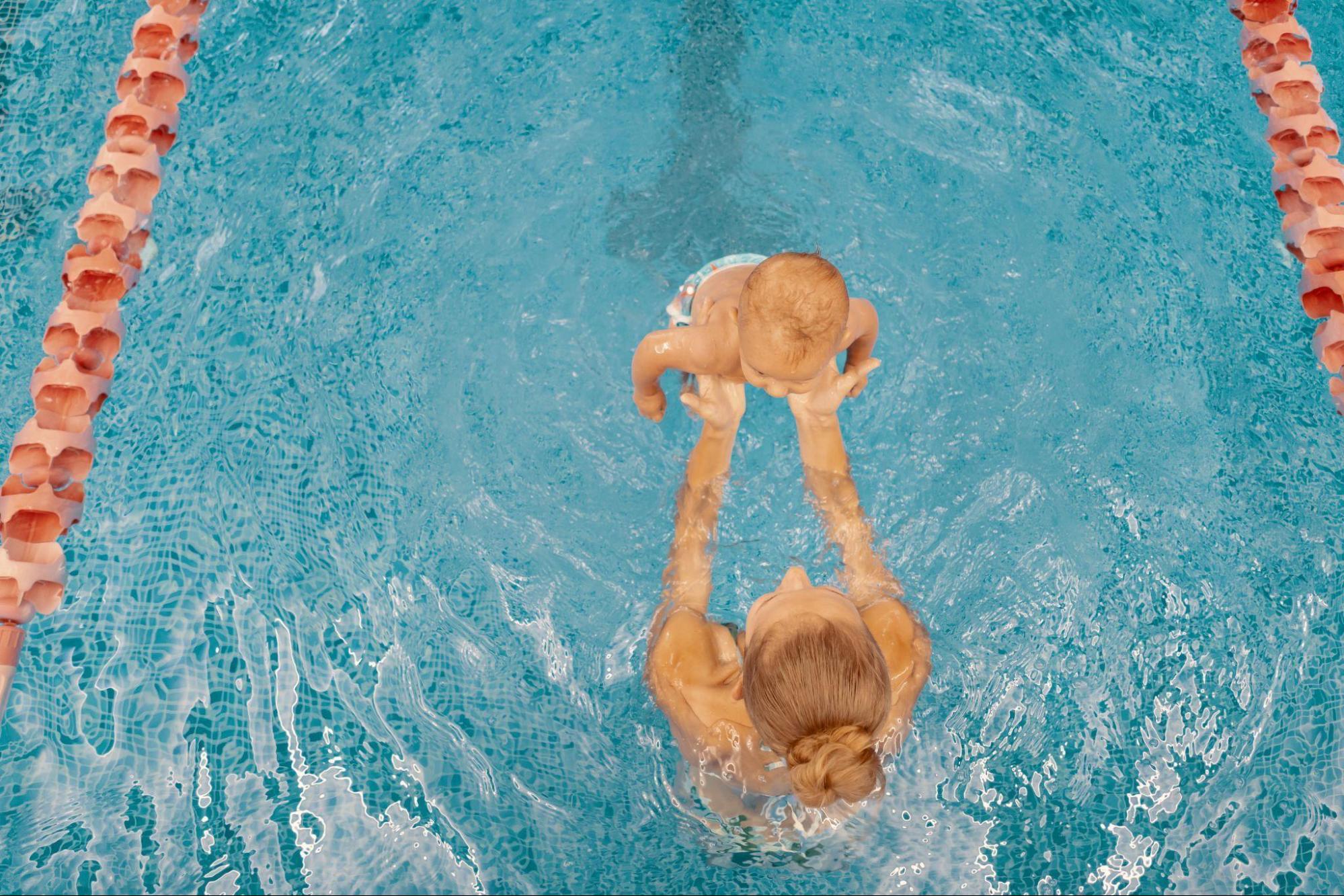From Splash to Stroke: Age-by-Age Swimming Milestones Explained

by Coach Mark
Learning to swim is a valuable life skill that offers safety, confidence, and lifelong benefits—but, like any developmental journey, it begins early and progresses over time. From a baby’s first splash to a teenager’s refined strokes, swimming ability evolves alongside age, physical development, and exposure to the water.
While some children may take to water naturally, others need more time. Understanding these swimming milestones can help parents support their child’s progress at every stage of development.
Swim Readiness (0–1 year)
During the first year of life, swim readiness focuses on introducing infants to water in a calm and nurturing manner. Rather than working on technique, this stage prioritizes building trust and comfort in the aquatic environment through playful, parent-led activities.
Simple exercises, such as floating with support, blowing bubbles, and gentle submersion, help stimulate natural reflexes and sensory awareness, setting the stage for future swimming milestones. Just as importantly, these shared experiences promote a sense of bonding with water, creating a positive emotional connection with swimming.
Water Exploration (1–3 years)
Children transition from passive water comfort to active exploration between the ages of 1 and 3, marking a significant stage in their swimming development. At this age, toddlers begin experimenting with independent movements, such as kicking, paddling, and basic swimming skills, including getting in and out of the water with assistance.
While their skills are still developing, their curiosity and confidence grow with each session. Parental involvement continues to play a vital role, as guided play and hands-on support help toddlers explore the water safely while reinforcing positive behaviour. Through these playful yet structured experiences, children start to build essential water mobility and early safety awareness, laying the groundwork for more advanced swimming skills in the years ahead.
Independent Strokes (3–5 years)
Between the ages of 3 and 5, children begin to show noticeable independence in the water, making it the ideal time to introduce fundamental swimming strokes such as freestyle and backstroke. As their motor skills and confidence improve, they are better able to follow structured instructions and engage in more focused practice.
Lessons at this stage place greater emphasis on proper technique, helping young swimmers understand stroke movements while also developing basic endurance through short, repetitive drills. At the same time, routine and consistency in swimming lessons play a crucial role; regular practice not only reinforces muscle memory but also nurtures strong swim habits that will support their progression into more advanced levels.
Swim Proficiency (6–12 years)
Children typically reach a higher level of swim proficiency between the ages of 6 and 12, characterised by increased stamina, refined technique, and growing confidence in the water. With better coordination and focus, they are ready to develop more advanced skills, such as diving, treading water, and swimming longer distances.
During this stage, swimming lessons often introduce goal-setting and light competition, such as team relays or timed laps, to keep swimmers motivated and engaged. These elements not only support personal development but also encourage teamwork and a sense of achievement.
Advancing Techniques (13–18 years)
As teens enter the 13–18 age range, swimming transitions from skill development to achieving key milestones through technique mastery, with a strong focus on refining strokes, increasing speed, and enhancing overall performance. Physical changes during adolescence, such as increased strength, endurance, and body awareness, support more advanced movements and enable swimmers to train at higher intensities.
With the guidance of structured coaching, teens can fine-tune their techniques, set competitive goals, and even pursue certifications like lifeguarding, which adds a sense of purpose and achievement to their swim journey.
Beyond the physical benefits, swimming can also help in emotional and cognitive well-being at this stage. It fosters discipline, builds confidence, and offers a healthy outlet for stress relief, making it not only a sport but also a powerful tool for personal growth during the teenage years.
Late Beginners (4+ years)
Not all swimmers start early, and for children aged 4 and above who are new to swimming or feel anxious about the water, the journey begins with overcoming fear and building confidence. At this stage, it’s crucial to bridge the emotional and skill gap with patience, structure, and support.
Marsden Swim School offers specialized beginner programs designed specifically for older first-time swimmers. These swimming lessons focus on creating a safe and encouraging environment where children can gradually adjust to water, learn to trust their bodies, and build foundational swim skills at their own pace.
Progress in this group is deeply influenced by two critical factors:
- The quality of instruction, where experienced swim coaches use proven techniques to gently guide children through their initial discomfort.
- Consistent support at home, where parents reinforce a positive learning environment with encouragement, firm expectations, and regular attendance.
Children at this stage may resist lessons at first, but with a strong stance on consistency and a collaborative approach between instructors and parents, most develop the confidence to move forward. Helping them understand that swimming is a lifesaving skill—not just a fun activity—lays the groundwork for a successful and empowering swim journey.
How Marsden Swim School Supports Swimming Milestones?
Swimming milestones are an essential part of a child’s development, marking progress in safety, skill, confidence, and independence in the water. As children grow, reaching these milestones at the right pace builds a strong foundation for long-term swimming success.
At Marsden Swim School, this understanding is built into every aspect of the program. Our structured 10-level progression system, from STARFISH (Level 1) to MANTA RAY (Level 10), is carefully designed to align with age-specific developmental stages. The early levels, such as our newborn swimming lessons, focus on fundamental water safety skills, including assisted floating and safety falls. At the same time, the later stages introduce stroke refinement, endurance building, and competitive swimming techniques.
Whether a child is just getting comfortable in the water or training with the senior squad, we provide a clear, age-appropriate pathway in our swimming classes for kids that supports continuous growth. With expert instructors and a focus on individual progress, parents can trust that their child is supported at every milestone along their swim journey.
Achieving Swimming Milestones with Marsden Swim School

Swimming development is a gradual, age-based journey that unfolds uniquely for every child. While progress may vary from one child to another, what remains essential is pairing their pace with expert instruction and a supportive learning environment. This is where structured, progressive programs make a meaningful impact.
By enrolling your child in well-designed swimming lessons in Singapore, such as those offered at our swim school, you ensure they receive age-appropriate guidance, consistent encouragement, and the necessary tools to thrive in the water. Start your child’s swimming journey with us today and help them grow into a strong, confident swimmer—one milestone at a time.

